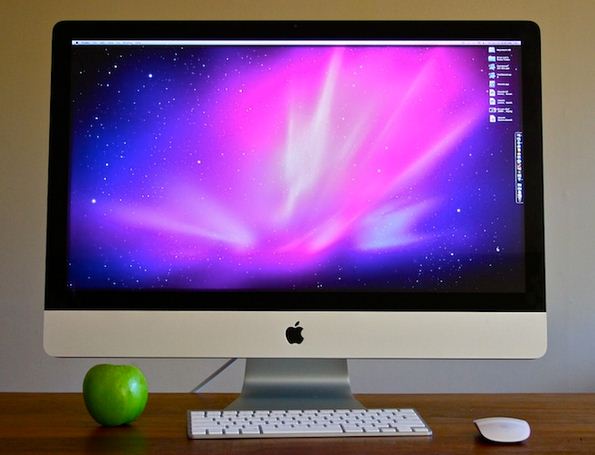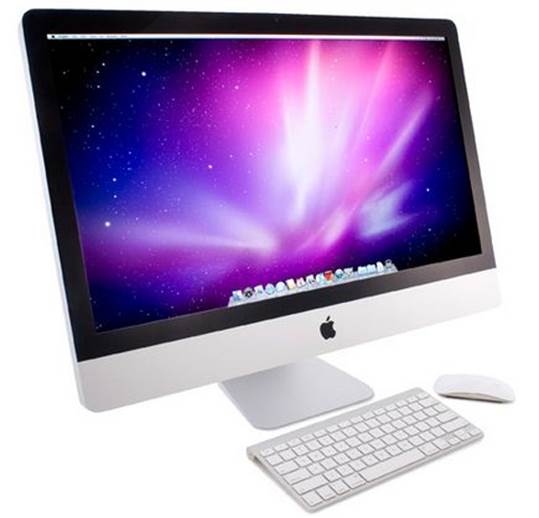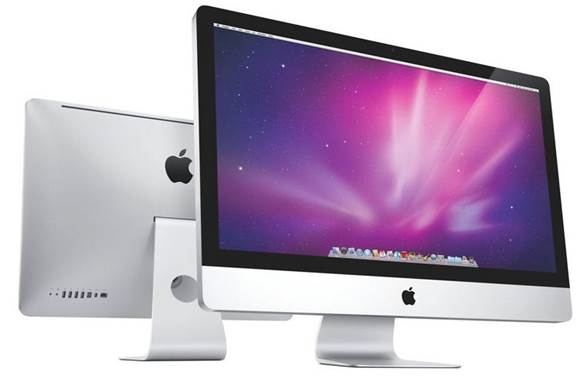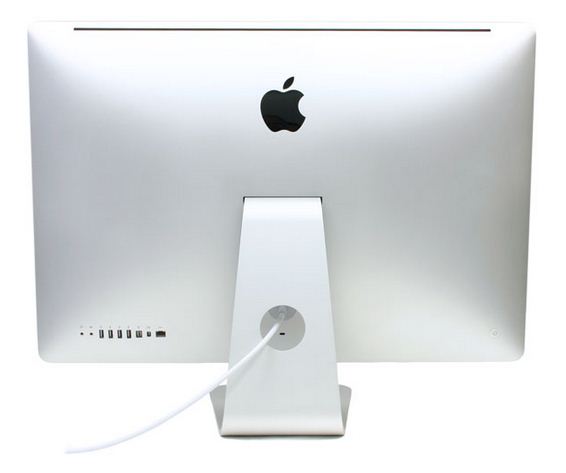Apple iMac 27-inch
Apple's iMac is doubtlessly, the
quintessential single-piece PC. The latest update slims the chassis down to
just
5inm at the outer edges, and 40% of the
previous design's volume. The largest iMac is no longer unwieldy in its bulk,
and is more a thing of beauty than ever.
The screen tilts through 65-95 degrees.
That's not as flexible as many Windows 8 all-in-ones, but the iMac's lack of a
touchscreen makes a super- shallow tilt angle unnecessary.
In the box is Apple's ergonomic nightmare
the Magic Mouse, and an awfully chic wireless keyboard without angle adjustment
or a numeric keypad.

The
largest iMac is no longer unwieldy in its bulk, and is more a thing of beauty
than ever.
Both look gorgeous, but have proven time
and again to be finicky and uncomfortable for long-time use. Some of that is
personal preference, but it's truly hard to believe that either device was
designed with ergonomics or practicality as a priority.
The iMac's screen is exceptional, though
I'd expect nothing less from a company as devoted to the design and photography
markets as Apple. The 2560 x l440-pixel display scored well in all areas when
tested with the Spyder4 Elite, achieving an overall rating of4.5/5, and
covering 100% of the sRGB color space.
Apple have reduced the distance between the
LCD panel and screen surface, making for a gorgeously crisp and vibrant
picture.
For photo or video editing, graphic design
or other image-heavy pursuits, the iMac's screen is its greatest advantage and
helps to justify the premium you'll pay for the iMac over its competitors.

Apple
have reduced the distance between the LCD panel and screen surface, making for
a gorgeously crisp and vibrant picture.
Our test model was based on the Intel Core
i5-3470S, a quad-core 2.9 - 3.6GHz CPU without hyper threading. The 3470S base
model sells for a rather reasonable $2,799. It has 8GB of RAM, an Nvidia
GeForce GTX 660M graphics chip with 512MB of dedicated memory, and a 1TB hard drive.
However, our model included Apple's ITB Fusion Drive instead - a hybrid of ITB
hard drive and I28GB SSD. That adds S400 to the price, elevating our model to a
more 'premium' $3,199.
Overall performance was solid - not quite
matching Lenovo's eight-core ThinkCentre Edge 92z in raw computing power, but
sufficient to comfortably run Adobe Creative Suite, to encode video, or other
such CPU-heavy tasks. Graphics performance was exceptional - Nvidia's GTX 660M
is a powerful mobile graphics chip indeed, and gave near chart-topping results
in our gaming and rendering benchmarks.
The 660M's only downside is its limited
512MB of dedicated memory. It's a great card for accelerating rendering in
design, photo and video applications, but hardcore Mac gamers may want to
spring for the next version up. That goes for $3,599 (assuming you also add the
Fusion drive), and includes an Nvidia GeForce GTX 675MX with 1GB of dedicated
memory.
If you’re going to be doing a lot of video
work, compression, or encryption, you can upgrade to an Intel Core i7
3.4-3.9GF4z CPU, and up to a maximum of32GB of RAM.

The
660M's only downside is its limited 512MB of dedicated memory.
The slimming-down has eliminated the
optical drive, so if you need to read or write DVDs, you'll need an external
drive.
There's a card reader, four USB 3.0 ports,
two Thunderbolt ports, a headphone socket which doubles as an optical S/PDIF
output for digital audio, and a gigabit Ethernet port. Wirelessly you get 802.1
in, and Bluetooth 4.0.
Comprehensive, but there's one problem: all
of the wired connections are lined up along the back of the screen, completely
out of sight. I don't know about you, but I'm constantly inserting and removing
flash drives, USB cables and SD cards. The iMac's port positioning makes that
overly difficult.
If you want an all-in-one PC for design
work, though, it's truly hard to recommend anything else. For home, it's
equally easy to endorse - huge screen for web browsing, enough power for
gaming, and you can always dual- boot with Windows if you need to.

There's
a card reader, four USB 3.0 ports, two Thunderbolt ports, a headphone socket
which doubles as an optical S/PDIF output for digital audio, and a gigabit
Ethernet port.
At A Glance
·
27-inch 2560 x 1440-pixel display
·
Intel Core i5-3470S quad-core CPU
·
8GB RAM
·
Nvidia GeForce GTX 660IVt graphics (512MB)
·
1TB hard drive + 128GB SSD (Apple Fusion Drive)
Apple iMac 27-Inch (Md095x/A)
- RRP incl GST: $2,799 (base model), $3,199 (as tested)
- Contact: apple.co.nz
- Rating: 4/5
Great graphical performance, a strong
all-rounder, but it places form over function where ports and peripherals are
concerned.